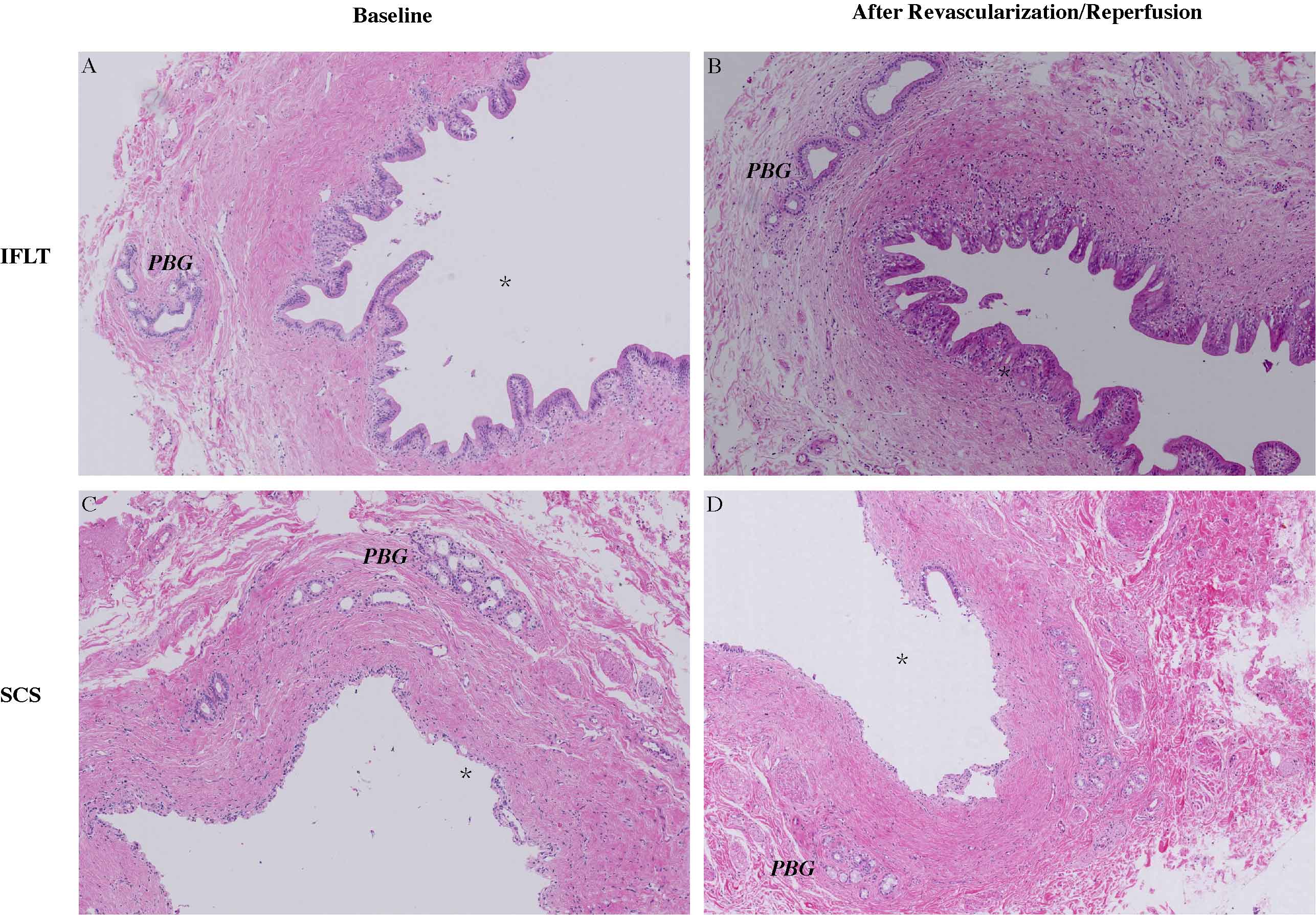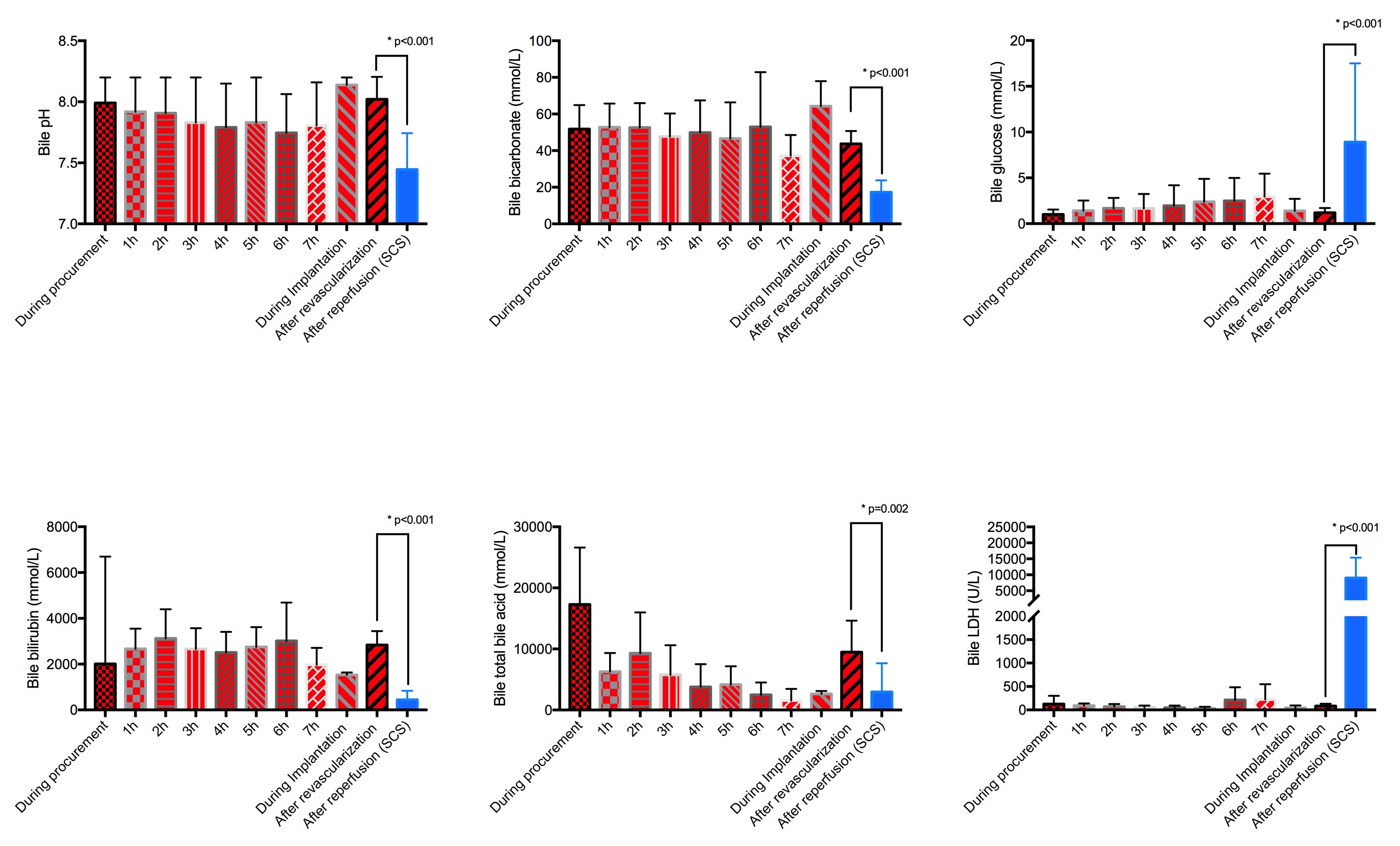Ischemia-Free Liver Transplantation Protects Bile Duct from Ischemia/Reperfusion Injury
Organ Transplant Center, The First Affiliated Hospital, Sun Yat-sen University, Guangzhou, China
Meeting: 2019 American Transplant Congress
Abstract number: B27
Keywords: Bile duct, Ischemia, Liver transplantation, Machine preservation
Session Information
Session Name: Poster Session B: Ischemia Reperfusion & Organ Rehabilition
Session Type: Poster Session
Date: Sunday, June 2, 2019
Session Time: 6:00pm-7:00pm
 Presentation Time: 6:00pm-7:00pm
Presentation Time: 6:00pm-7:00pm
Location: Hall C & D
*Purpose: Ischemia-free liver transplantation (IFLT), based on normothermic machine perfusion and innovations in surgical technique, can provide continue blood supply from procurement to implantation that would avoid ischemia/reperfusion injury (IRI) of bile duct. We aimed to investigate whether IFLT reduces IRI injury of the bile duct, by comparing bile duct epithelial cell morphology and function between IFLT and static cold storage (SCS) liver transplantation.
*Methods: Fifteen livers from donation after brain death (DBD) were transplanted by IFLT and 15 matched DBD livers transplanted by SCS served as controls. Bile duct biopsies were collected before transplantation and after reperfusion/re-vascularization. Bile samples were collected from procurement or reperfusion to bile duct anastomose. Histological severity of biliary injury was compared according to an established semiquantitative grading system. Biliary epithelial cell function was assessed by measuring pH, bicarbonate and glucose concentration in bile. The concentrations of GGT and LDH in bile were measured as biomarkers of biliary injury.
*Results: Results of the histological examination of bile duct injury demonstrated significantly minor injury of the biliary epithelium and peribiliary glands in IFLT (Fig 1). In SCS bile mostly produced after hepatic artery reperfusion, but in IFLT bile continually produced throughout procurement, preservation and implantation. The bile pH and bicarbonate in IFLT were significantly higher than bile in SCS, however, bile glucose in SCS was much higher than IFLT (Fig 2). GGT in bile did not show difference between two group, but LDH in bile of SCS was hundreds or even thousands of times higher than IFLT. In addition, bilirubin and bile acid concentration of bile in IFLT were much higher than the SCS.
*Conclusions: This study suggests that the innovate technique IFLT keep donor liver physiological function during transplantation and significantly reduces the IRI of bile duct in liver transplantation.
To cite this abstract in AMA style:
Yang J, Huang S, Zhang Z, Zhao Q, Ju W, Zhu Z, Tang Y, Wang L, Zhang Y, Sun C, Wu L, Guo Z, He X. Ischemia-Free Liver Transplantation Protects Bile Duct from Ischemia/Reperfusion Injury [abstract]. Am J Transplant. 2019; 19 (suppl 3). https://atcmeetingabstracts.com/abstract/ischemia-free-liver-transplantation-protects-bile-duct-from-ischemia-reperfusion-injury/. Accessed December 18, 2025.« Back to 2019 American Transplant Congress


